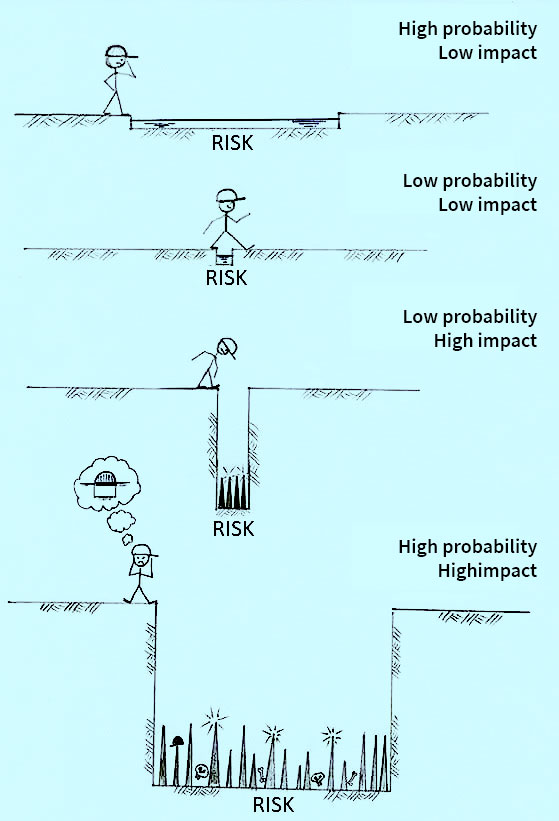Risks are everywhere around us in our life and our brain has a way of determine whether we should react to it or not. Let’s see some examples: you are walking down the street, get to the corner, the light is red, drivers have their cars stopped and the pedestrian signal says “walk”; without even think about it, you’ll cross the street. But, if the same situation happened on a corner without lights and cars coming from the left at a considerable speed, you would look and choose when to cross the street, finding the safest moment to do it.
At some point, in just a few milliseconds, the brain assesses the situation and determines what could go wrong and what the consequences would be. Immediately after that, the decision is clear: cross or wait.
We do exactly that when developing software, documenting it so everybody knows about the system. And we do that so we can determine a mitigation plan (waiting for a bit before crossing or just use another corner to cross in the example above). The process is very simple and consists in assessing two variables: likelihood and impact.
Likelihood: the chance of something, unexpected at this point, to happen.
Impact: how much it will affect the project.

In both cases we can use a range that goes from low to very high, having 2 or three steps in the middle: low, medium, high, very high.
But, what is risk? Everything that could go wrong? Well, not really: it is about things we can’t control. Let’s say we need to buy a printer for a project, the risk won’t be our ability to buy it, but the likelihood of not getting the money from the accountant or a delay in the shipping.
In four easy steps, the process will be:
- List the risks
- Determine the likelihood and impact
- Think of a mitigation plan
- Add a cost of the mitigation plan
Lets see an example:
| Risk | Likelihood | Impact | Mitigation Plan | Cost |
|---|---|---|---|---|
| One of the developers has quit | Medium | High | Add an extra developer part time to the project that is up to speed and can quickly cover the other one | $3,000 * 50% of the salary of a developer. |
| We run out of power supply for more than 4 hours | Low | High | Rent a generator for the whole summer | $4,500 * The cost of the rent |
| The client didn't provide credentials on time | High | Medium | Ask the client every other day for credentials and let them know that the lack of credentials will delay the project deadline | Reputation |
| Apple releases a new iOS version that prevents us to publish our app | Medium | Low | Subscribe to Apple news to be the first to know. Discuss with the client what we would do if/when this happens | 10 days: Two weeks of work of our dev/testing teams. Plus going live two weeks later. |
( * ) numbers are for the solely reason of explaining that risks can be measured




